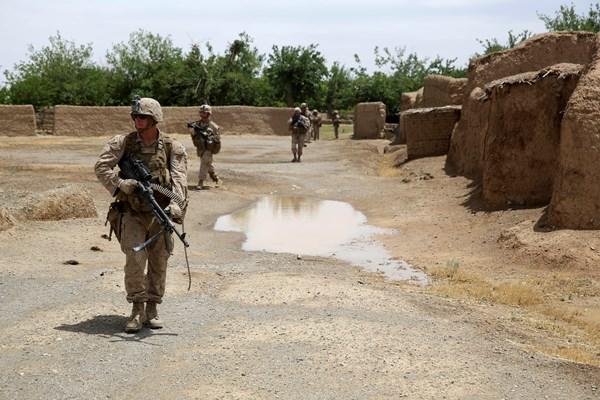With prospects for peace talks increasingly remote, Army Lt. Gen. John W. Nicholson Jr. is wrapping up his recommendations on whether to continue troop withdrawals this year, a U.S. military spokesman in Kabul said Wednesday.
Army Brig. Gen. Charles Cleveland said Nicholson has finished his 90-day assessment of the tactical situation in Afghanistan since assuming command from Army Gen. John Campbell and would be sending his report up the chain of command within days.
Nicholson's assessment will go first to Army Gen. Joseph Votel, and then to Defense Secretary Ashton Carter with input from Joint Chiefs Chairman Marine Gen. Joseph Dunford, himself a former commander of U.S. and NATO forces in Afghanistan.
Currently, there are 9,800 U.S. troops in Afghanistan and the original plan was to have that number down to 5,500 by the end of this year, but the resurgence of the Taliban, the presence of the Islamic State in Iraq and Syria, or ISIS, the depressed economy and political turmoil in Kabul appeared to argue against more withdrawals.
In a video briefing to the Pentagon, Cleveland said of Nicholson's report that "he is literally finishing it this week as we speak, and he is presenting it to his military chain of command."
The U.S. once had more than 100,000 troops in Afghanistan following surges authorized by President Barack Obama in 2010 and 2011, decisions that came with a timetable for eventual withdrawals. Critics warned then that Obama had blundered by telling the enemy when the Americans would leave.
Afghan officials had dangled the possibility of peace talks with the Taliban, but those prospects appeared to fade earlier this year as Afghan President Ashraf Ghani charged that Pakistan was attempting to undermine his government by continuing to back the Taliban.
The chance of peace talks revived again, if only briefly, last month when a U.S. drone strike in Pakistan killed the Taliban's leader, Mullah Akhtar Muhammad Mansour. Those hopes faded again when Mansour was quickly succeeded by Mullah Haibatullah Akhundzada, who immediately pledged "never to bow before the infidels."
"I don't believe that we will see peace talks any time in the short term with Mullah Haibatullah," Cleveland said. The new Taliban leader was "really not a money guy, really not a military guy," but was more of a religious leader, he said. "We don't expect him to come to the negotiating table," he said.
Peace talks have been pressed by the Quadrilateral Coordination Group, which was put together last year by officials from Afghanistan, Pakistan, the U.S. and China. The group met last month but the Kabul government did not send a representative.
--Richard Sisk can be reached at Richard.Sisk@Military.com.
Don't Miss a Single Military.com Story
To read the full article and get exclusive benefits, sign up today.
It’s FREE
Why am I seeing this? Visit our FAQs


























